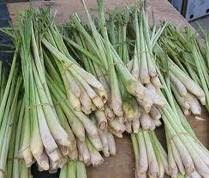The poppy plant, Papaver somniferum (Poppy of sleep) originated in the Mediterranean region, and is believed to have come from southern France and Italy. It was cultivated by the ancient Sumerians who called it the “plant of joy”. It spread throughout Europe and to Asia, although the Egyptians didn’t know about it until it was introduced by the Romans. Of course the poppy plant produces opium and the seeds we use in cookery are the ripe seeds from the same plant. However they do not contain narcotic substances. The unripe seeds contain codeine and morphine, which is so valuable in medicine.
 Hippocrates, the father of medicine, recognized that they were good to cure insomnia, for inflammation, fever and dysentery. The ancient Greeks believed they were sacred to the god of sleep, Hypnos, rather than his twin brother Morpheus, the god of dreams. They were used as charms and in amulets to bring luck, money and love.
Hippocrates, the father of medicine, recognized that they were good to cure insomnia, for inflammation, fever and dysentery. The ancient Greeks believed they were sacred to the god of sleep, Hypnos, rather than his twin brother Morpheus, the god of dreams. They were used as charms and in amulets to bring luck, money and love. When opium was introduced to the Muslim world, it was quickly adopted, as opium was not haram according to Islam, as alcohol is. It reached South Asia in Mediaeval times, and now India is the only country to legally export it. The Indian poppies are mainly cultivated in Uttar Pradesh and the Indian Punjab.
When opium was introduced to the Muslim world, it was quickly adopted, as opium was not haram according to Islam, as alcohol is. It reached South Asia in Mediaeval times, and now India is the only country to legally export it. The Indian poppies are mainly cultivated in Uttar Pradesh and the Indian Punjab. ‘For he on honey-dew hath fed
‘For he on honey-dew hath fedAnd drunk the milk of paradise’.
Here he is referring to Kubla Khan.
De Quincey writes of ‘the marvelous agency of opium, whether for pleasure or pain,’ and talks of the ‘cloudless serenity’ he felt while in an opium induced state. However it is extremely addictive and its use should not be countenanced.
In cookery poppy seeds can be used to thicken and flavour sauces, blended with tamarind to make a curry paste, and can be boiled in a little water with salt and oil then added to rice to give it a nutty flavour. They are used as a coating for breads and biscuits, of course.
 In traditional medicine on the subcontinent they are used to treat coughs and asthma, but because of the narcotic effects of the unripe seeds, these are not used in prolonged treatments. To treat diarrhea, cook poppy seeds with green cardamoms and sugar, strain and drink the liquid. Poppy extracts are used to reduce fever, help in TB treatments and for kidney and liver complaints.
In traditional medicine on the subcontinent they are used to treat coughs and asthma, but because of the narcotic effects of the unripe seeds, these are not used in prolonged treatments. To treat diarrhea, cook poppy seeds with green cardamoms and sugar, strain and drink the liquid. Poppy extracts are used to reduce fever, help in TB treatments and for kidney and liver complaints. The recipe below is for a milk-based drink which will cool you down when the weather is hot. It is also good for the stomach and an energy booster. If you don’t like milk, you can use water instead.
SERDAI
Ingredients
 1 litre milk
1 litre milk30 gr almonds
50 gr poppy seeds
4 green cardamoms, seeds removed and husks discarded
6 black peppercorns
ice
sugar to taste
Method
If the almonds have skins, plunge them in boiling water for a minute or two so that you can easily slip off the skins. Grind the poppy seeds very well. Then grind the cardamom seeds.
Next grind the almonds.
Put the black peppercorns, sugar and milk in a pan and bring to the boil. Remove from the heat, put all the ingredients except ice in it and leave to cool.
Serve with ice.
This has Taste and is a Treat.






















